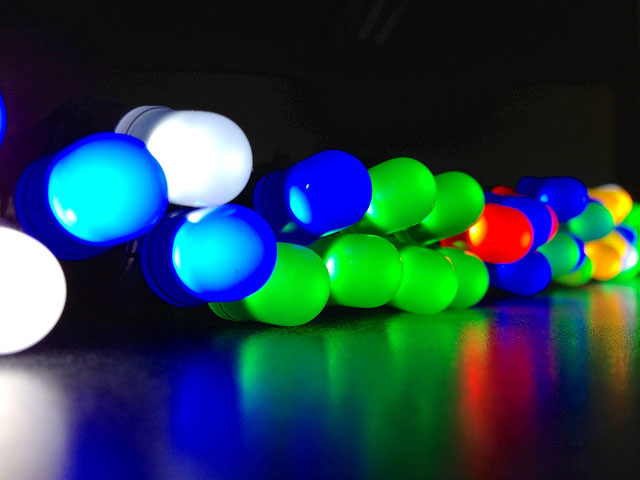
Image via Michael Geminder
Scientists have developed energy efficient, ultra-thin light-emitting diodes (LEDs) for next-generation communication technologies.
Light sources that reliably convert electrical to optical signals are of fundamental importance to information processing technologies. Energy-efficient and high-speed LEDs that can be integrated onto a microchip and transmit information are one of the key elements in enabling high volume data communication.
Two-dimensional (2D) semiconductors, graphene-like, atomically thin materials, have recently attracted significant interest due to their size (just a few atoms thick), well-defined light emission properties, and their prospects for on-chip integration. While, in recent years, researchers have succeeded in fabricating LEDs based on these materials, realizing efficient light emission has remained a challenge.
An efficient LED device converts most of its electrical power input into light emission (i.e., with minimal losses due to conversion into other forms of energy such as heat). Previous studies on LEDs based on 2D semiconductors reported that a large amount of electrical current is needed to trigger light emission. This means that a substantial fraction of the input electrical power is dissipated as heat instead of generating light.
The team discovered that preventing the leakage of electrical current from the emissive layer to the metal electrodes significantly reduces this energy loss. The researchers demonstrated that an insulating layer of a few nanometers significantly suppresses the loss of input electrical energy without introducing excessive electrical resistance.
By optimizing the thickness of the insulating layers, the team reduced the electrical current needed for triggering light emission by more than 10,000 times as compared to the state-of-the-art LEDs based on 2D semiconductors.
“Our devices can operate at extremely low electrical current because the device design ensures that there is minimal wastage of electrical power,” says lead researcher Goki Eda, a professor in the physics and chemistry departments at the National University of Singapore.
“By optimizing the material quality together with device design and fabrication methods, it becomes possible to have efficient light emission with precise control at the nanoscale level. This will potentially have significant impact on the development of future information technologies,” adds Eda.
The team is currently investigating the origin of energy loss processes in order to further improve the efficiency of their devices.
This article was published on Futurity. Read the article.
Source: National University of Singapore


